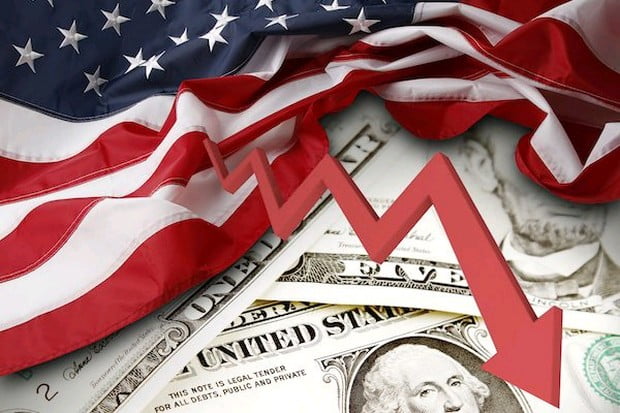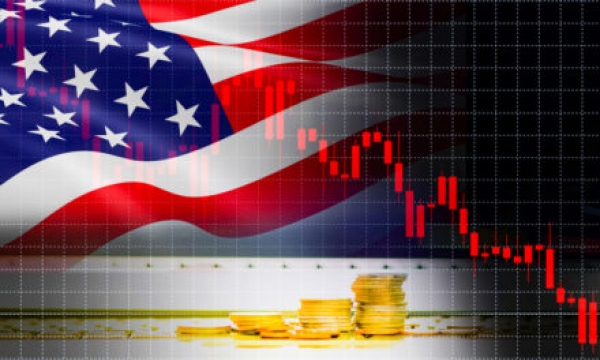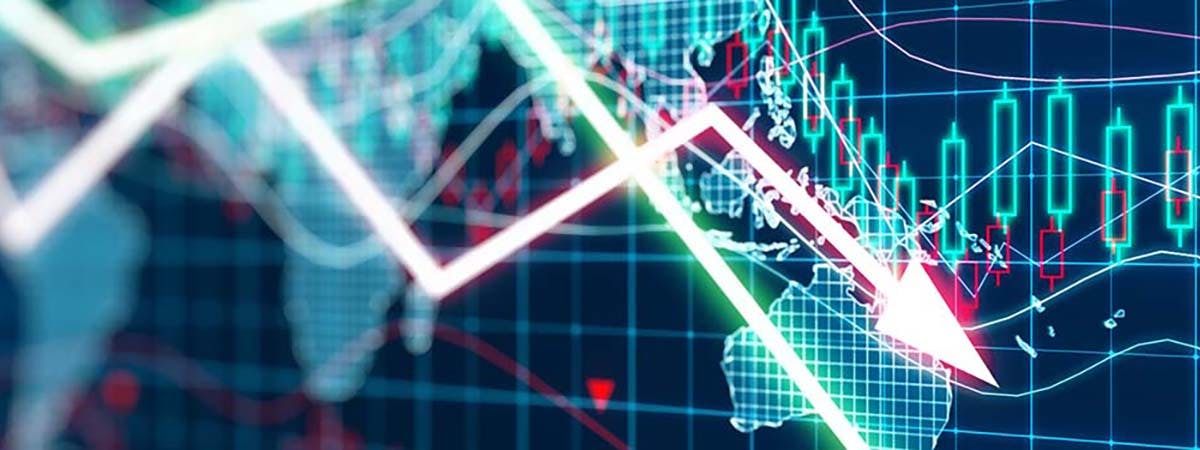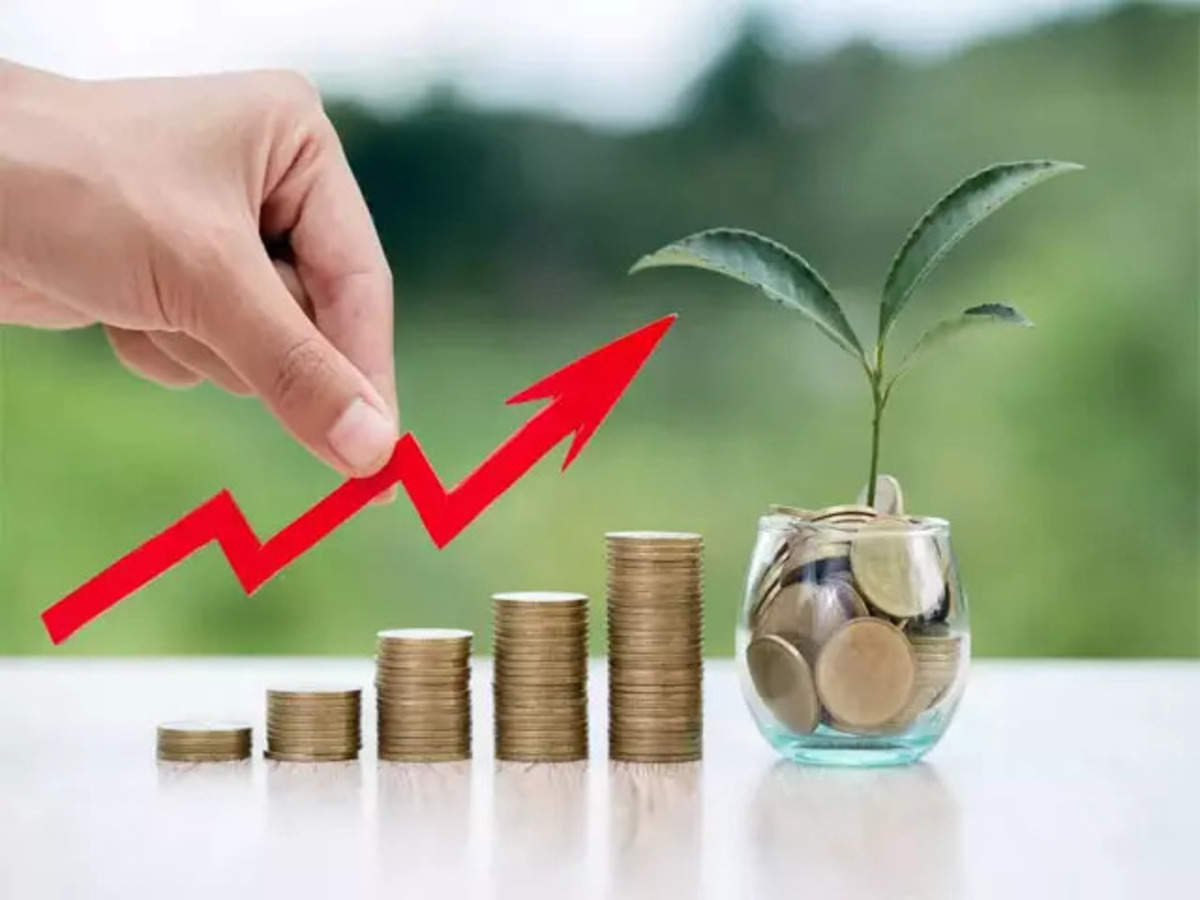The US economy has yet to face its most severe recessionary crisis.

The Federal Reserve’s stance on interest rates may encourage lenders to raise the interest rates they charge US residents for debt. There are concerns that credit quality may decline in the future due to the high household indebtedness relative to other nations. However, lenders are sure that the demand for loans will stay high. Signs that consumer spending is slowing down.
Despite their concerns about an impending recession, bankers find solace in the economy’s low jobless rate. They claim that because of tight labour markets, households would be able to pay off their debt and perhaps be eager to take on more.
The impact of the exchange rate is now being prepared for by pharma producers as a strong dollar reduces their profits. Their fuel and freight cost concerns are also reducing their income. Pharmaceutical companies do not anticipate a significant drop in demand as long as COVID is still affecting some nations. Walgreen, a network of pharmacies, is altering its approach as demand for Covid declines.
Inflation or recession?
What Exactly Is Inflation?
The steady, widespread increase in prices across the economy is known as inflation. The cost of products and services has grown during the last year at a specific pace, which is typically stated as a per centage. A small amount of inflation is encouraged. But if the rate of inflation rises too high, it becomes a concern. The consumer price index (CPI), a compilation of frequently purchased goods, is a popular way to gauge inflation in the United States. Food, shelter, clothes, transportation, and healthcare are all included in one basket.
The economy can be negatively impacted by excessive inflation. Due to the increasing rate of inflation, everything from grocery store pricing to gasoline for your automobile is getting significantly more costly. Consumers have less money to spend on products and services when prices rise. People make changes to their spending patterns, which together can slow down economic growth overall and perhaps increase unemployment. There may be less demand and increased prices for businesses.
Why does inflation occur?
Price-driven inflation: This occurs when the costs of the essential components of goods and services, such as labour and raw materials, increase. Companies pass on the expenses to customers through increased pricing when they have to pay significantly more for inputs.
Demand inflation: Inflation may increase when there is an excess of money and demand is outstripping supply of products. It may result from higher government spending or a tax decrease that increases personal income. Prices will increase when there is greater demand than supply for an item.
Expectations for inflation: People and corporations who anticipate future price increases may anticipate increased inflation. Workers may therefore demand more pay to offset the rising cost of living, still, this feedback loop might result in a self-fulfilling prophecy: Concerns about inflation only make the issue worse.
What Exactly Is a Recession?
Economic downturns, such as recessions, are usually characterized by decreased growth in the gross domestic product (GDP) for two consecutive quarters. Recessions are usually defined as periods of sustained economic contraction lasting six months or more.
The formal definition of a recession, however, is a little more complex. The National Bureau of Economic Research (NBER) in the United States is responsible for determining when recessions begin and conclude. According to its definition, a recession lasts more than a few months and is evidenced by a “substantial reduction in economic activity across the economy,” according to data on GDP, income, employment, industrial output, and sales.

Unemployment rates rise, salaries may stagnate, and individuals usually have less money to spend during a recession. Such conditions result in less demand for products and services, which can further harm the economy.
Which Is Worse: Recession or Inflation?
While recessions and inflation are fundamentally different economic events, they are inextricably intertwined. As a result of firms responding to greater costs by cutting production and raising prices, high inflation rates might signal the start of a recession. Additionally, there is a chance that the Federal Reserve’s decision to increase rates further to reduce inflation might contribute to the start of a recession.
The Economic Policy Institute reports that analysts’ views differ on whether a recession or increasing inflation is worse for the US economy. One prevalent claim is that because it affects everyone, inflation is worse than a recession. A recession, on the other hand, may have a lesser social impact due to the concomitant job losses.
Recessions, according to those who oppose that school, lower everyone’s income across the board. In addition to joblessness during a recession, there is a loss of productive resources, notably labour, which lowers economic output. It might be tough to decide which is worse for the US economy: inflation or recession. Both have a detrimental effect on several facets of the economy, including lending and consumer spending. But you can manage your finances and investment portfolio in times of growing inflation or a recession by being aware of the differences between these two situations.
The following changes have been associated with recessions:
Decreased expenditure by consumers: People buy fewer products and services when they have less money to spend. This lower demand can lead to enterprises cutting output, which leads to layoffs and increasing unemployment in the US. Increased costs for businesses: Increased expenses, such as the price of goods or labour, may drive businesses to increase pricing. Inflation and a decline in consumer expenditure may result from this.
Decreased lending: When banks are hesitant to make loans, it might affect firms’ capacity to grow or make new investments. This decreased lending may result in slower economic development.
The stock market is down: by eroding people’s and companies’ wealth, a decline in stock prices can help create a recessionary environment. Less spending and investment may result from this, further weakening the economy. Typically, recessions don’t last very long. Recessions typically last for about 10 months. Afterward, the economy usually bounces back and even surpasses its pre-economic slump level.
India must prepare for the US recession. Controlling inflation comes at the expense of growth.
The US, the world’s financial superpower, has been hit hard by inflation. In June 2022, it saw its highest annual inflation rate since November 1981, rising to 9.1%. The conflict between Russia and Ukraine has led to an unprecedented increase in energy costs. The COVID-19 epidemic has also disrupted supply chains and raised food prices as a result of catastrophic natural disasters.
The US Federal Reserve’s top opponent is now this torrid run of inflation since it is proving to be quite damaging to the US economy. The Federal Reserve has chosen a pretty aggressive strategy, assertively raising interest rates to confront (and defeat) this opponent.
What effects may that have? This means that the US may soon experience a period of recession. According to Bank of America analysts, there is a 40% risk that the US will experience a recession by the end of 2022 or the beginning of 2023. As the capitalist goliath that it is, the US contributes around 30% of the world’s GDP. The rest of the globe will undoubtedly be impacted if there are any changes to the US economy.
What, therefore, is in India’s future? Will a US recession affect countries on the other side of the globe? Yes, to answer briefly. India might be impacted in several ways if the US experiences an (apparently impending) recession.
Rupee decline, GDP
Since 2022 began, the value of the Indian rupee has been falling quickly. When compared to the US dollar, the rupee last week touched a record low, dropping from 74.25 in January to 80.06. Due to the US Federal Reserve’s decision to hike rates, the Reserve Bank of India (RBI) would be under pressure to do the same.
The US market is a source of around 18% of India’s exports of goods and 60% of its exports of IT and ITeS. According to Madan Sabnavis, chief economist of the Bank of Baroda, this high dependency will cause a decline in commerce and have a significant impact on exports. The US economic downturn will be a major factor in the decline of India’s GDP. Long-term trends show that India’s GDP growth rate will decline by more than the initial prediction of 7.2% in FY23. A decline in India’s GDP growth rate would have had a domino effect on its revenue sources, and a negative slope in its economic trajectory will soon start to emerge.
The active threat of rising unemployment
External variables, such as the anticipated US recession, will compound pre-COVID challenges of hunger, poverty, and income inequality by adding to the long-standing employment crisis that shows little to no prospect of recovery. These circumstances have only gotten worse because of the protracted epidemic. The service industry, which accounts for 50% of India’s GDP, is expected to suffer severely from job losses and layoffs. To combat inflation, the US Federal Reserve is faking a recession. Even though we’re talking about weapons, this one has two edges./istock137044062-5bfc3f49c9e77c00263533cc.jpg)
They could be successful in reducing inflation, but GDP would inevitably suffer as a result of the action. Developing economies would suffer greatly if money began to flow out. If that happened, their currency would lose value, which would result in far higher inflation.
If it provides any solace, analysts predict that the potential recession will be modest and brief. Thankfully, India can avoid any significant negative effects due to its economic considerations. Having said that, India would still be affected by the winds created in the West, regardless of how well-insulated it is. Everything depends on how well you’ve prepared.
There is no historical precedent that suggests a recessionary economy can create 528,000 jobs in a single month, as the United States did in July. A decline cannot be explained by an unemployment rate of 3.5%, which is the lowest since 1969.
But that doesn’t imply there won’t be a recession in the future, and oddly enough, it’s the labour market’s extraordinary resilience that could represent the largest long-term threat to the whole economy. To contain inflation, which is at its highest level in more than 40 years, the Federal Reserve is making an effort to reduce pressures on historically tight labour markets and rapid pay increases. The reality is that this gives the Fed more leeway to continue tightening, even if doing so increases the likelihood of the economy entering a recession.
Significant indications of the recession
Friday afternoon saw the largest difference in yields between the 2- and 10-year Treasury notes in approximately 22 years. An inverted yield curve is a phenomenon that has historically served as a warning indicator of recession, especially when it persists for a protracted length of time. However, it just means that a recession is likely to occur within the next year or two. While this gives the central bank some breathing room, it also raises the possibility that it won’t have the luxury of taking its time and instead will need to move swiftly, which is what policymakers had intended to avoid.
The US invests in demand.
American Express
The business benefited from a solid increase in consumer expenditure on travel and leisure. Both inside and outside of the US, customer acquisition growth was solid. The management went into detail on the increase in operating expenditures brought on by higher salaries to recruit and retain talent.
Due to the high cost of recruiting due to a tight labour market, American Express has increased its operational expenditures. It is not overly concerned about inflation because its credit quality and expenditure growth are both encouraged by a record low jobless rate. The management predicts a recession but that the labour market’s deterioration would be a greater issue. The business does not see that happening and is fairly optimistic about growth resulting from consumer demand.
Goldman Sachs
Given the Unfavorable interest rate environment brought on by the Fed’s fast rate rises, the financial giant reported a decline in income. Although revenues fell, the lending industry held up well. The bank’s equity investments caused the bank to suffer a significant loss, and investment banking income fell by 41%. However, the loan industry, consumers, and corporations grew. Revenues from consumer banking increased by 25%. Lending to corporations brought in more money than a year ago. According to Goldman Sachs, there is a good likelihood that the US economy will enter a recession. In the event of a recession, it anticipates that the burden on its loan portfolio will grow.
JP Morgan Chase
Although revenues were hurt, the bank had a respectable year-over-year loan increase of 7%. The bank’s balance sheet took a hit as a result of Unfavorable market circumstances. Surprisingly, the bank’s card business’s performance provided crucial consumer information. The management claims that US consumer expenditure, especially discretionary spending, is not slowing down. Spending on necessities is beginning to be affected by inflation. While the bank’s revolving balances increased nine per cent, card outstandings increased by 16 per cent. This demonstrates that the US consumer still has a leveraged balance sheet and is prepared to fulfill their desires with loans.
Visa
The solid results for April and June were published by the global payments corporation that powers cards. The company’s transaction volume increased as a result of the increase in travel and other discretionary spending. The total amount of payments increased by 8%, with the US reporting a 13% rise. Regarding their expectations for the upcoming quarters, management remained optimistic.
While investors fret about inflation, Visa may profit from the erratic market and rising prices. Inflation has generated more Visa payments and greater transaction amounts. The management also believes that consumers won’t cut back on their spending just yet. The business emphasized that those developments in consumer buying patterns show resiliency. According to Visa management, US consumers use Visa to purchase products and services that do not always correspond to the basket of retail inflation. The corporation is also aware that protracted and high inflation may damage consumer spending.
Chevron Corporation
Following the Russian invasion of Ukraine, oil prices rose above $100 per barrel, and local plant capacity caused refining margins to rise. As a result, Chevron Corporation announced a second-quarter profit of $11.6 billion, up from $3.1 billion in the same period in 2017. During the third quarter, crude prices fluctuated between $95 and $120 per barrel as the conflict and the wave of sanctions on Moscow brought the oil market back to levels last seen in 2008.
Revenue increased 83% to $68.8 billion, from $37.6 billion at the same time last year. The top end of Chevron’s annual share repurchase target range was boosted to $15 billion, up $5 billion from its previous estimate, and the company improved its balance sheet, bringing its debt ratio to less than 15% while maintaining its dividend schedule. Chevron is expanding its energy supply to help address the issues confronting international markets. Permian output is more than 15% higher than it was a year ago, and the company is one of the top US producers of renewable fuels.
edited and proofread by nikita sharma




